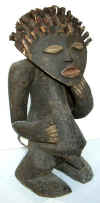 |
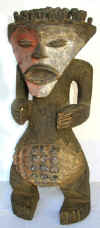 |
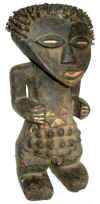 |
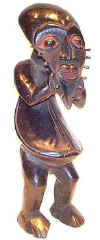 |
|
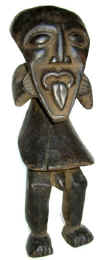 |
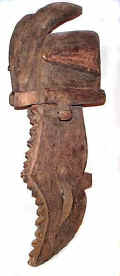 |
 |
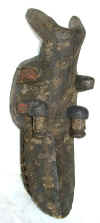 |
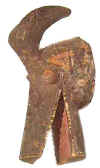 |
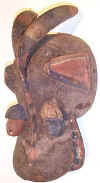 |
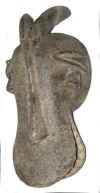 |
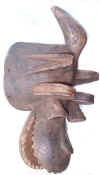 |
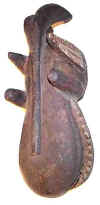 |
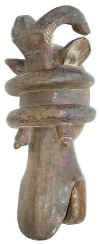 |
 |
TRIBAL AFRICAN ART
MAMBILA (MAMBILLA)
Cameroon and Nigeria
The 25,000
Mambila, farmers and stockbreeders, occupy the region bordering Cameroon and Nigeria, to
the north of Grassland. Land, every family’s property, is distributed by the
group’s chief. The primary cereal crops include sorghum,
rice, and millet. They also grow bananas,
yams, maize, manioc, peppers, peanuts, sweet potatoes, and tobacco. They acquired the
practice of milking cattle from the Fulani and also use manure from the cattle as
fertilizer. Goats, chickens, dogs, and sheep are raised for meat. Some hunting and fishing
is done, but neither contribute significantly to the daily economy. Labor is
divided between men and women, and children begin to work at the age of twelve. A society
of mutual assistance, the kurum, participates in clearing land, harvesting, and
building houses and facilitates social contacts during celebrations and dances. The men
are in charge of weaving cotton, metal- and woodworking, and braiding fiber. Merchants and
blacksmiths are separated from the rest of the community. The trade is passed from father
to son. They practice the ancestor cult and agrarian rites. The Mambila only worshipped
family ancestors. According to their beliefs, at one’s death the ancestors take away
the soul of the deceased during the night. The chiefs of the lineage were buried in
granaries, for they are representative of prosperity and life, just as the grains of
millet.
Mambila
art centers upon an association called suaga. It is primarily concerned with
justice and supernatural cleansing within the community. The Mambila produced a
considerable number of figures that are characterized by a heart-shaped face; pigments are
often applied later. Mambila figures embody ancestors who, according to their beliefs, are
responsible for the clan's wealth. The figures appear with bent legs and typical enlarged
head outlined in wooden pegs. Mambila also make highly stylized animal masks. Masks and
statues were kept hidden from the eyes of women in a net hung on the inside of a hut that
was on stilts; it was guarded by the head of the family. The front wall of the hut was
decorated with two figures, male on the right and female on the left, crowned by a rainbow
and framed by the sun and the moon. Dancers celebrating the beginning and end of the
agricultural cycle are led by a tribesman wearing a cephalomorphic helmet mask. He is
often followed by a retinue of assistants wearing secondary masks in the shape or stylized
animal heads, usually dog’s or crow’s. In general, women are excluded from these
masquerades, both as actors and as spectators. Women dressed in rags and vegetation
present their own version of the masquerade at a different time and place.